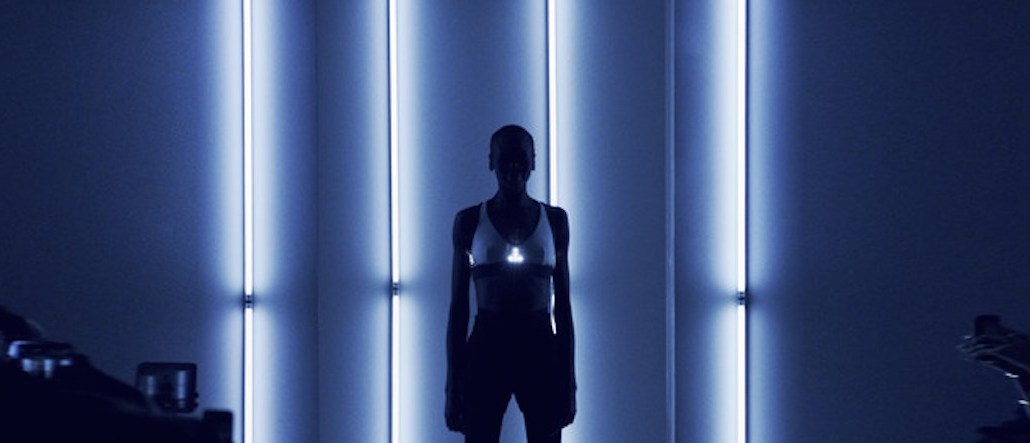
Intel has gotten inside something new these days. The technology giant is determined to bring its brand of high tech to the fashion world, melding stylish form with innovative function.
While the brand is not new to wearables or collaborations with designers, it has doubled down recently: Through Reddit AMAs, meetings with designers and a hefty presence at Fashion Weeks around the world, Intel is loudly proclaiming itself the partner of choice for the fashion industry.
The next big goal is to get the fashion community to use Intel Curie, a button-sized, inch-long module with the power of a computer, designed specifically for wearable devices and expected to ship this quarter. Curie, which was first teased last year, has been the engine powering some of the partnerships Intel has already gotten off the ground.
For example, the brand showed off Curie at the New York Fashion Week in February. The little chip powered reactive hand wraps and a glowing dress at Chromat.
In November, it sponsored the fall fashion week and created a sports bra for designer Chromat that opens vents for the wearer when her body temperature spikes. There was also an “adrenaline dress,” a concept dress that measures adrenaline in the body and launches a protective carbon fiber layer when the hormone level is too high.
More recently, Intel worked with Yazbukey on pins and necklaces that look like emojis but are actually fitness trackers. It also teamed with hot lux curator Opening Ceremony for a line of bracelets and worked with Barney’s to launch those.
The idea now is to move from experimental one-offs like the Chromat adrenaline dress to making Curie — and Intel tech in general — a more established part of the fashion and luxury communities.
“Our approach for wearables in the fashion sector is focused on achieving a balance between both form and function, which is why we are forging partnerships with brands and organizations who know their industries best, like Tag Heuer or the Council of Fashion Designers of America,” said Sandra Lopez, vp of strategic alliances and business development for wearables at Intel. Her team has just returned from conducting a learning session with the British Fashion Council and 40 designers. (She, however, declined to provide further details.)
In short, fashion lines that people will actually buy — and not just Instagram gimmicks at fashion shows — are the priority. In November, Intel launched a Swiss luxury connected watch with Tag that runs on the Intel Inside chip. The watch looks like a classic analog Tag, but also sends notifications, alerts and tracks goals. It may solve one of the big complaints with wearables, which is that that they have been simply not chic enough to wear. Similarly, the brand launched with the Fossil Q line of watches.
Intel has been slowly chipping away at fashion for a while. Although tech and fashion theoretically make great partners, big partnerships haven’t quite caught on (bar a few spectacles like DvF’s Google Glass bonanza from a couple years ago). Often tech lags behind, or is simply being deployed for show and not function. Rony Zeidan, founder of luxury and fashion agency RO NY, said that fashion has focused on otherworldly issues that aren’t what consumers want. “Fabrics that can predict the future or allow you to transport yourself to a different part of the world — simply to exaggerate a bit — are a bit premature,” said Zeidan. “The industry tends to speak to itself versus the general public that barely knows how to download an app on their phone.”
Lopez agrees: The fashion-and-tech relationship is very much in its infancy. She said that one of the reasons it hasn’t moved forward as much is because the two haven’t really come together for consumer lines — just for show. “What we have learned is the importance of proof of concepts,” said Lopez. So she’s working with Rebecca Minkoff, the fashion house whose eponymous founder joined her on a Reddit AMA to discuss fashion-tech last month to get more women interested in tech and fashion and how the two can come together in an effort to make both industries more diverse by ethnicity, gender and background.
The fashion community has always had a strong desire to transcend, innovate and look forward, so it’s natural for fashion to embrace emerging technologies,” said Lopez. “And we’re committed to making it a reality.”
More in Marketing

Pitch deck: How Amazon is recasting Twitch as a core part of its CTV pitch
Amazon is positioning Twitch as a defining asset in its CTV ambitions.

Netflix transforms former mall department stores into experiential venues
The location in Dallas opens this week, and one at the King of Prussia mall near Philadelphia opened last month.

Future of Marketing Briefing: AI has created a new talent paradox in programmatic agencies
The job isn’t execution anymore. AI handles that. The job is judgement.








